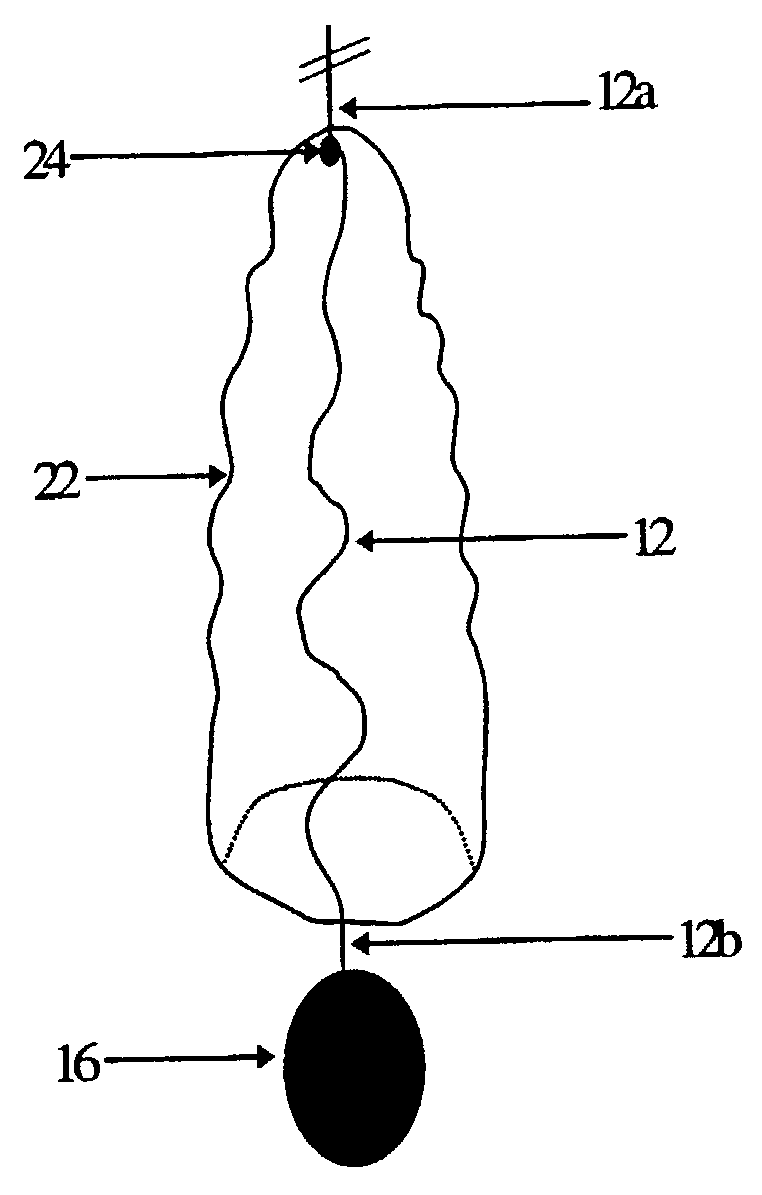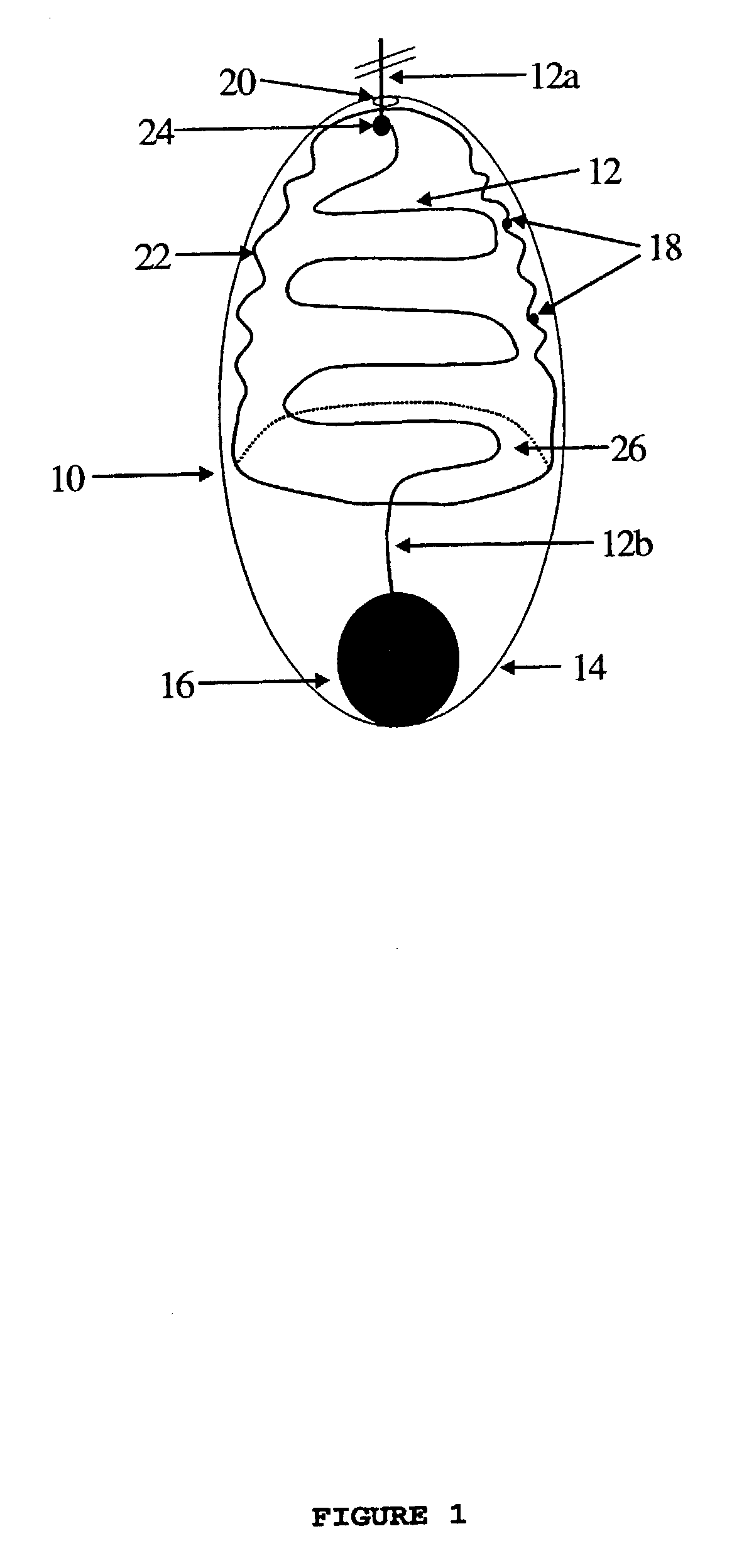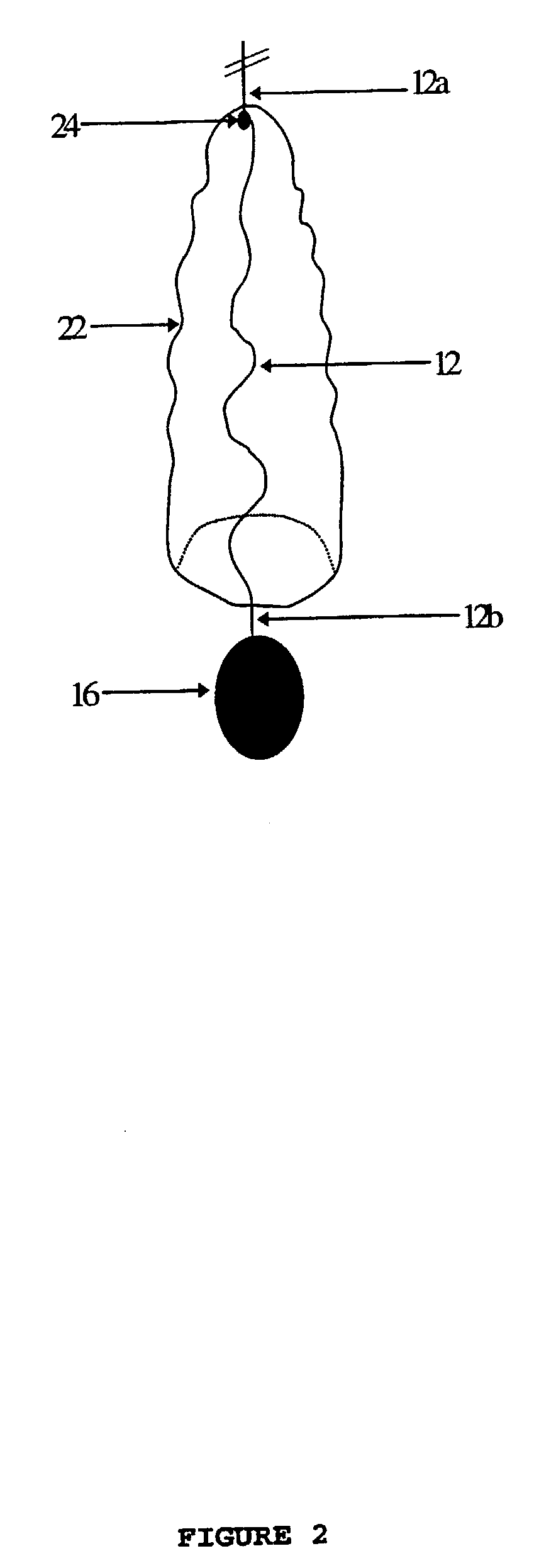Methods and devices for obtaining samples from hollow viscera
a hollow viscera and sample technology, applied in medical science, surgery, vaccination/ovulation diagnostics, etc., can solve the problems of increasing the problems associated with the method of obtaining such samples, requiring expensive and invasive techniques, and causing serious patient discomfor
- Summary
- Abstract
- Description
- Claims
- Application Information
AI Technical Summary
Benefits of technology
Problems solved by technology
Method used
Image
Examples
example 1
Types of Capsules
[0060]In all of the Examples described below the control string device used was the Enterotest capsule (HDC Corporation, San Jose, Calif.) that is routinely used for obtaining intestinal mucus from patients.
[0061]The Enterotest capsule is a string device comprised of a 90–140 cm long nylon fibre coated with a mixture of bee's wax and mineral oil enclosed in a 2.5 cm long weighted gelatine pharmaceutical capsule. In use, the string end protruding from the capsule is held and the capsule swallowed with a 100 ml of water. The gelatine capsule dissolves in the stomach acid, releasing the weight and sampling string. After 1 h, the string is pulled out through the mouth and oesophagus. The mucus clinging to the distal end is scraped off and examined as desired.
[0062]As described previously, the preferable capsules for this invention are either dissolvable gelatine pharmaceutical capsules comprising of two portions that readily dissolve within 5 minutes on entering a warm ...
example 2
Types of Drag Material
[0065]The absorptive nature of various types of drag material were assessed in vitro to determine their potential use as a sampling material for obtaining biological specimens from the gastrointestinal tract. The drag material samples selected encompassed both natural and synthetic fibres of different thicknesses (ply) and weaves. Attachment of H. pylori was measured as urease activity via a alkalimetric assay.
[0066]An alkalimetric assay for the enzyme urea amidohydrolase (urease) was used to compare the amount of H. pylori present on a drag material sample. Addition of urease to an assay mix of urea and phenol red in a 1.5 ml capacity disposable plastic cuvette results in the conversion of urea to ammonia and carbon dioxide. Ammonia increases the pH of the assay mix causing a colour change in the pH sensitive marker, phenol red that is monitored spectrally at a wavelength of 559.
[0067]The activity of the urease enzyme produced by the bacteria in a 50 μl aliquo...
example 3
Coating of Drag Material
[0073]Surprisingly, nylon string of similar thickness and weave to the standard nylon fibre in the Enterotest capsule demonstrated superior adhesion of H. pylori on the drag material compared to the control (Enterotest) string (731.0%±167.6, n=6). During our initial testing using the Enterotest string it was noted that after 30 minutes exposure to a bacterial suspension of H. pylori some areas of the sampling material appeared dry and impermeable. We concluded that the addition of bee's wax and mineral oil to the Enterotest string may have been inhibiting the permeability of the string to the bacterial suspension. We therefore decided to treat the drag material to increase its absorptive nature. We concluded that compounds that react with sites found on the surface of bacteria could potentially enhance the binding and retrieval of microorganisms from gastrointestinal fluid samples.
[0074]To address this avenue, drag material samples were pre-treated with 3-ami...
PUM
 Login to View More
Login to View More Abstract
Description
Claims
Application Information
 Login to View More
Login to View More - R&D
- Intellectual Property
- Life Sciences
- Materials
- Tech Scout
- Unparalleled Data Quality
- Higher Quality Content
- 60% Fewer Hallucinations
Browse by: Latest US Patents, China's latest patents, Technical Efficacy Thesaurus, Application Domain, Technology Topic, Popular Technical Reports.
© 2025 PatSnap. All rights reserved.Legal|Privacy policy|Modern Slavery Act Transparency Statement|Sitemap|About US| Contact US: help@patsnap.com



